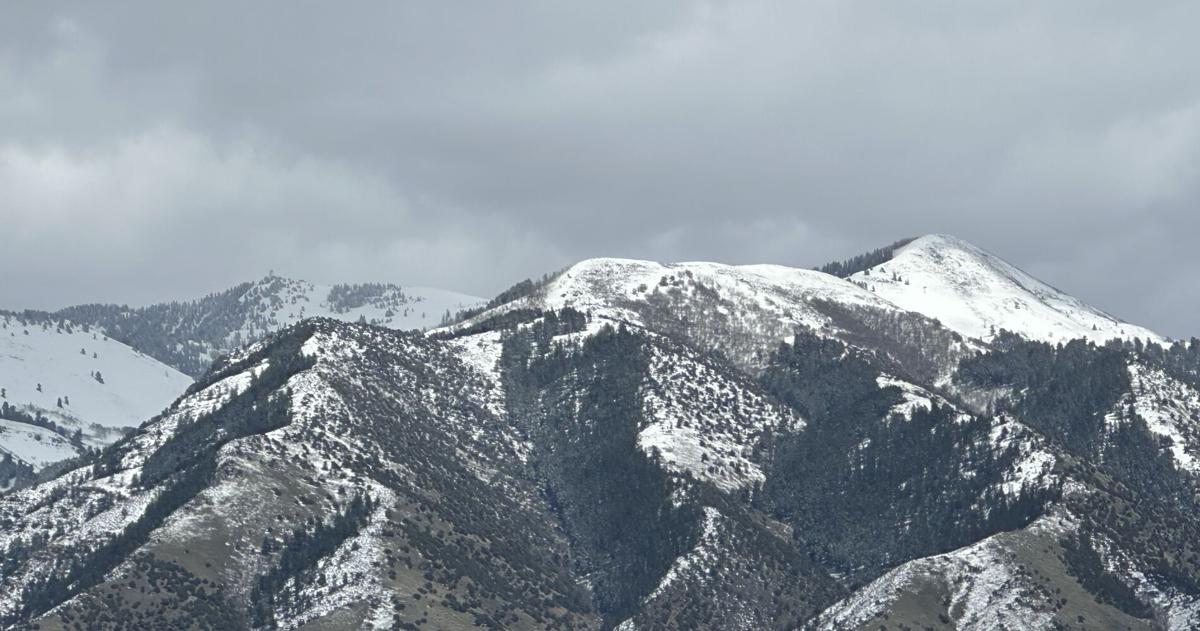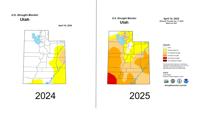SALT LAKE CITY — Utah’s statewide snowpack peaked at 14.3 inches on March 23, matching the state’s typical annual maximum, water officials said Friday. But despite a solid snowpack, extreme drought conditions continue to grip the southern part of the state, and water managers are preparing for a potentially dry summer.
“The Drought Response Committee (DRC) has been meeting more regularly to address concerns in drought-impacted areas,” said Candice Hasenyager, director of the Utah Division of Water Resources. “Many state agencies are coordinating their response to drought conditions that will likely intensify heading into summer.”
The committee typically convenes in March and October but meets more often when conditions worsen.
Graphic compares Utah’s current drought situation to 2024. Currently, 4% of the state is in the extreme category of drought and 39% in the severe category. Last year at this time, Utah was not experiencing extreme or severe drought conditions.
Source: https://droughtmonitor.unl.edu/CurrentMap/StateDroughtMonitor.aspx?UT
Spring runoff is now in full swing, with many of Utah’s rivers and streams running high, fast, and cold. Officials caution recreators to prioritize safety as they venture outdoors for the warmer months.
Hasenyager also urged Utahns to delay outdoor watering, especially in northern regions considering this week’s wet weather.
“Hold off on irrigating until your landscape needs it,” she said. “Most of northern Utah can hold off on irrigating until Mother’s Day or until temperatures are in the mid-70s for several days.”
Reservoirs across northern Utah are showing varying levels of storage heading into the growing season. As of mid-April:
-
Bear Lake is 76% full
-
Newton Reservoir is near capacity at 96%
-
Hyrum Reservoir is at 74%
-
Porcupine Reservoir is above capacity at 114%
-
Willard Bay stands at 93%
-
Woodruff Creek Reservoir is at 58%
-
Woodruff Narrows Reservoir is at 89%
With nearly 95% of Utah’s water supply originating from snowpack, proper runoff management and storage are critical. Hasenyager said the state’s reservoirs will continue to act as buffers as summer approaches.
Boaters are reminded that all watercraft users — including paddleboards and kayaks — must complete the annual Utah mussel-aware boater course and carry proof of completion in their launch vehicle.
Water conservation remains a key focus statewide. Programs like the Agricultural Water Optimization initiative and SlowtheFlow.org are being promoted to encourage both residential and agricultural users to adopt smarter watering practices and prepare for long-term drought resilience.


